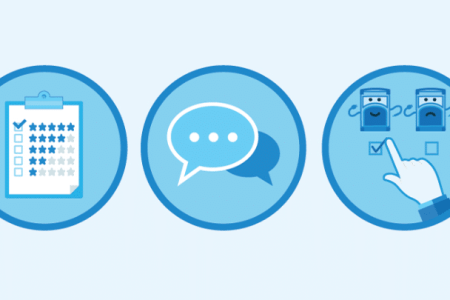There are plenty of customer service statistics out there that prove how valuable it is. But, without that statistics, it’s easy to understand that happy customers can do a lot of business, and do a lot for your business. Which is why providing customer service should be a key priority.
Just take a second to think about it. A happy customer is more likely to be a repeat buyers/user, they are more likely to refer people to you, and they will gladly write you a good review. You can imagine how providing a good experience for customers is a proven way of building up your business and reputation.
By using certain customer marketing tactics, you’ll be less likely to lose customers. If you are implementing support strategies to keep customers happy, you’ll find that repeat customers can actually spend more money than a new customer.
If you need more convincing, we’ve compiled a list of customer service statics. Let’s go through them now.
Category 1: Good customer service = good ROI
You can probably imagine how providing good customer service can lead to success. By providing a good customer experience you know that your business can thrive, as well as your revenue. But, if you need reassurance, here it is:
- Various sources estimate that it is anywhere from 3-30 times as expensive to attract a new customer as it is to retain an existing one.
- Increasing customer retention rates by 5% increases profits anywhere from 25%-95%. Bain & Company
- Customer experience will overtake price and product as the key brand differentiator by the year 2020. Walker
Category 2: What bad customer service means
You probably realize that bad customer service can be detrimental to any business. In fact, you’ll see time and time again people ranting about a horrible experience they endured. Watch out, because a customer who experiences bad service is likely to share it with friends. Feeling undervalued, wronged, or mistreated, are grounds for viral social media content. Here’s the proof.
- Top two reasons for customer loss: Customers feel poorly treated, and the failure to solve a problem in a timely manner. Customer Experience Impact Report by Harris Interactive/RightNow, 2010
- Americans tell an average of 9 people about good experiences and tell 16 (nearly two times more) people about poor experiences. American Express Survey, 2011
- 33% of Americans say they’ll consider switching companies after just a single instance of poor service. American Express 2017
- 50% of Gen Xers and 52% of baby boomers stopped doing business because of poor customer service.
- It takes 12 positive experiences to make up for on unresolved negative experience. “Understanding Customers” by Ruby Newell-Legner
Category 3: Customer opinions matter
Obviously, customer opinions matter. They are the ones that help keep your business afloat. But, to put things into perspective, here are a few customer service statistics to really prove the point.
- 70% of buying experiences are based on how the customer feels they are being treated. Touch Agency
- 58% of Americans perform online research about the products and services that they are considering purchasing. Source: Jim Jansen, Pew Research Center’s Internet and American Life Project, 2010
- When it comes to making a purchase, 64% of people find customer experience more important than price. Gartner
- Answering a social media complaint increases customer advocacy by as much as 25%. Convince and Convert
- 40% of customers switch brands or services because a competitor offers better customer support. Zendesk
Category 4: The power of customer relationships
As you work on your customer service skills, you may realize that it’s a lot easier to build and maintain good customer relationships as well. So keep building those relationships, consistency is key.
- 69% of U.S. online adults shop more with retailers that offer consistent customer service both online and offline. Forrester
- Feeling unappreciated is the #1 reason customers switch away from products and services. New Voice Media
- 83% of complaints that received a reply on social media liked or loved the fact that the company responded. Bain & Co
- It costs 6-7 times more to acquire new customers than to retain existing ones. Bain & Co
Category 5: The best ways to provide customer service
One size does not fit all. Even though people look for excellent customer service, the way they want to receive it is changing. These customer service statistics shine a light that customer service doesn’t just mean good face to face interaction anymore.
- Out of all self-service channels, customers most frequently use knowledge bases. Forrester
- Millennials prefer chat support channels over others. Comm100
- Customer service interactions over Twitter have increased 250% in the last two years. Twitter
- 46% of online customers expect brands to provide customer service on Facebook. Oracle Retail
- Almost 35% of customers feel the interaction with chatbots delivers a better experience. Ubisent
Summary
It may come as no surprise, but customer satisfaction plays a huge role in customer service statistics. In fact, it’s customer opinions that help businesses evolve.
If you’ve learned anything from these stats, it should be that it takes some seriously good customer support to stand out from the crowd. It’s good to remember that today’s customers have a lot of power in whether or not your business does well. Plus, they have more options than ever.




